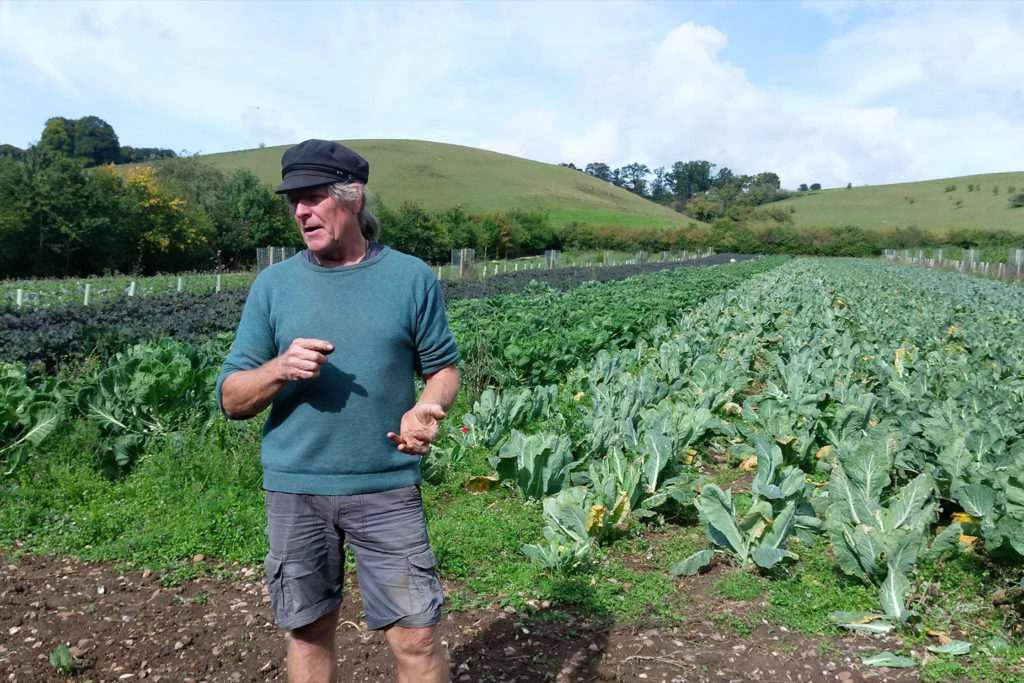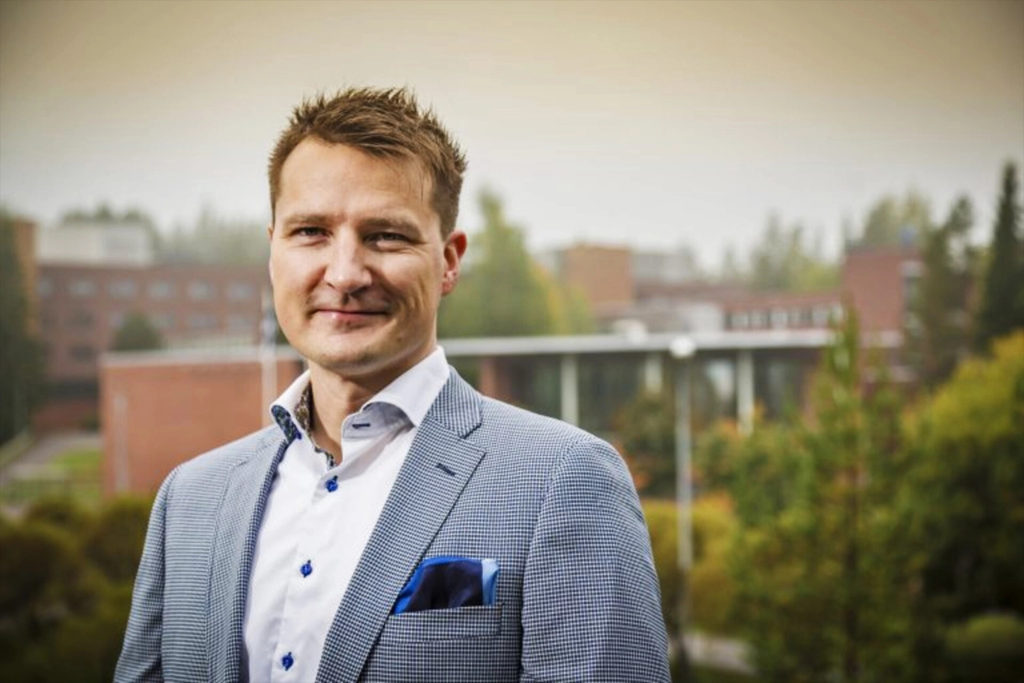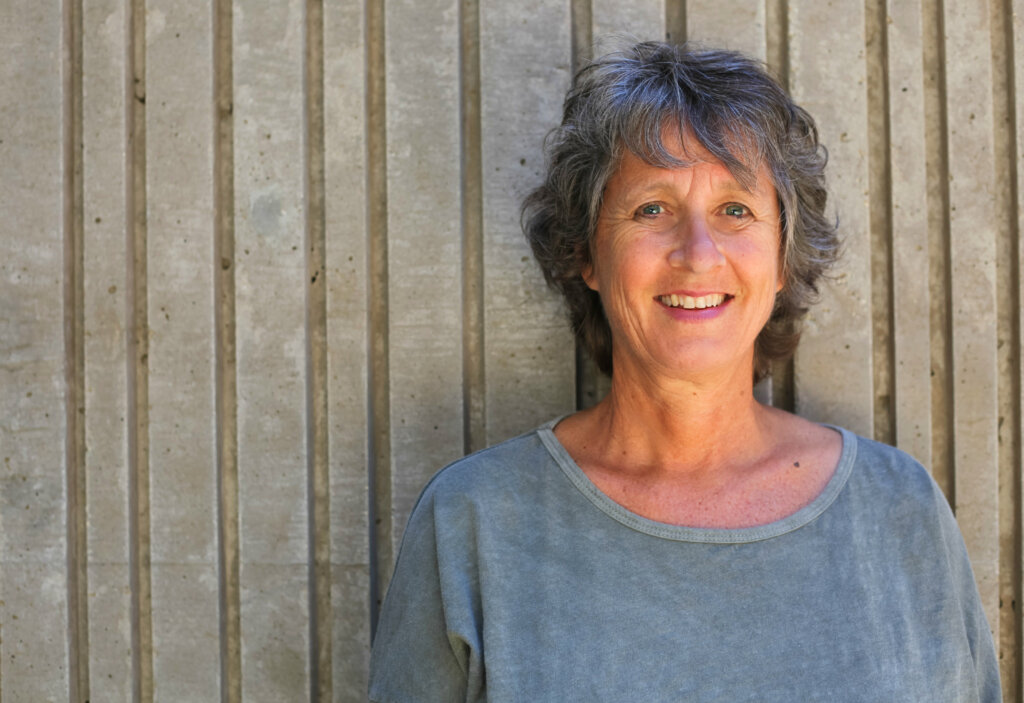Original publication by Sue Branford for news.mongabay.com on 11 November 2022

Image by S.Kilungu (CCAFS) via Flickr (CC BY-NC-SA 2.0).
- Soaring industrial livestock production is dramatically increasing greenhouse gas emissions, deforestation and biodiversity loss. Current meat production methods are unsustainable and fast pushing the natural world and the global food system to the edge of collapse, argues British environmentalist George Monbiot.
- Monbiot says conventional solutions, like a global switch to veganism and/or the large-scale implementation of sustainable agroecology, are advancing too slowly to avert looming disaster. The only solutions, he says, are rapid high-tech fixes.
- The best approach, he contends, is one that would free food production from photosynthesis, using atmospheric hydrogen to feed protein- and fat-rich bacteria. The revolutionary technology can produce meat and cheese from the air that, reportedly, tastes as good as the “real” thing.
- Critical voices fear this not-yet-widely-tested techno fix may be a “magic bullet” that doesn’t work in the real world. Others say the only path to averting climate catastrophe is via mobilization around food sovereignty — the right of everyone to healthy foods produced by ecologically sound and sustainable methods, including innovations by traditional peoples.
“We cannot sustain the Earth’s [life support] systems if we carry on with industrial farming,” declares George Monbiot. “There’s the sheer scale of the land used, and there’s the extraordinary shock to the planet caused by [petrochemical-based] pesticides, fertilizers, and the huge damage done to the soil by over-ploughing. And then there’s the very real possibility that the food system itself could collapse.”
Monbiot, a renowned U.K. environmentalist, told Mongabay he recently realized that the only way to save the natural world was for humanity to quickly come up with, and commit to, a far less destructive, high-tech means of producing food. That revelation led to his new book, Regenesis — a tome he says required massive research and which was his life’s most challenging work.

Industrial food production driving Earth systems toward failure
In Regenesis: Feeding the world without devouring the planet, Monbiot warns of industrial agriculture’s breakneck growth, putting Earth on a catastrophic collision with unsustainability.
The total demand for new farmland — driven partly by human population growth, partly by biofuels, but mostly by the shift in diets towards meat and dairy — could amount to 10 million square kilometers [3.9 million square miles] by 2050. This is the area of Canada. Most of the expansion, unless something changes, will happen in South America and sub-Saharan Africa sweeping not only through tropical forests but also through wetlands, savannahs, and seasonal woodlands.
He emphatically warns:
Farming is the world’s great cause of habitat destruction, the greatest cause of the global loss of wildlife, and the greatest cause of the global extinction crisis. It’s responsible for around 80% of the deforestation that’s happened this century.
Monbiot is especially concerned by the staggering harm done by livestock, with the production of a kilo of protein from beef generating more than 100 times more greenhouse gases than the production of a kilo of protein from peas.
Surprisingly, that impact persists with both conventional and organic pasture-raised cattle: “This will come as a shock to many,” he writes. “There may be no more damaging farm product than organic, pasture-fed beef.”
The alarming scale of the problem, says the author, demands a drastic, quickly implemented solution.

Techno diet for a desperate planet
One solution often touted by activists, Monbiot says, is for the world to stop consuming meat and dairy products. If the land now occupied by livestock were rewilded, the carbon drawn down from the atmosphere by recovering ecosystems would be equivalent to all the world’s fossil fuel emissions for 16 years.
Another way forward: large-scale adoption of agroecology. In his book, Monbiot tells of a visit to a U.K. farm where a revolutionary new technique achieves high yields of fruit and vegetables, without using pesticides or fertilizers and without destroying wildlife. It shows, he says, that organic farming can be “genuinely regenerative.”
Similar agroecology projects are creating a new Greener Revolution — but they need to be upscaled rapidly. Though excited by these prospects, Monbiot fears neither veganism nor agroecology can deliver change fast enough to prevent ecological collapse.
After much study, Monbiot settled instead on a third path to food and ecological security: a techno fix that could produce high-protein and high-fat foods that taste good and don’t trash the natural world.

Image by AGFORWARD project via Flickr (CC BY-NC-SA 2.0).
After investigating several promising high-tech projects, Monbiot focused on one developed by Finnish scientist and entrepreneur Pasi Vainikka. Using a fermentation tank, he grows protein- and fat-rich bacteria that don’t draw their energy from photosynthesis, but rather from hydrogen pulled straight out of the air.
But, asked Monbiot, is it tasty?
In a visit to Vainikka’s lab, the activist watched as an unappealing thin yellow sludge lapped at the side of the fermentation tank. Piped onto a heated drum, the sludge turned into a more attractive golden flour that smelt of scrambled eggs. The lab staff mixed that goo with wheat flour and produced a pancake that, Monbiot declared, tasted “rich and mellow,” just like those he loved as a child.
That’s “One small pancake for man, one giant flip for humankind!” he exclaimed. Not only were the pancakes delicious, they were also highly nutritious — the flour’s protein content clocked in at 60%.

Image courtesy of the European Space Agency.
An idea with a future?
Vainikka is CEO of Solar Foods, a food tech company that develops innovative solutions for global food production. He, like Monbiot, believes the natural world can only be saved by a revolution now:
“Humans have initiated several food revolutions, from the age of hunter-gatherers to our current industrial system,” he explains. “Solar Foods’ method of producing food will underpin the next wave, what we might term the New Food Revolution. Our ambition is to unite naturalists and futurists in the shared goal of sustainable, simplified food production.”
Kearney, a management consulting firm, agrees, suggesting that meat replacements have the potential to “disrupt” the $1 trillion conventional meat industry by significantly altering how consumers respond and also how industries operate by offering a recognizably superior product. This New Food Revolution could feed the world without destroying nature, it says.
The air-into-food technology promises nutritious alternatives to beef, lamb and chicken, that taste the same as “real” meat, but without requiring vast harmful monocultures. Although some farming would still be required to produce vegetables and some grains, the New Food Revolution would largely eliminate the need for livestock farming and for the hugely destructive soy, corn and palm oil monocultures.
If true, the consequences could be momentous: “If bacterial protein is widely accepted, for the first time in human history we will have a staple food that does not arise from photosynthesis,” said Monbiot.
If successful, the new technology could break the old, apparently inviolable connection between land use and food production, as very little land would be needed to generate the bacteria.

Image by Rhett A. Butler/Mongabay.
Tomas Linder, an associate professor of microbiology at the Swedish University of Agricultural Sciences, has compared the land area needed to grow protein in a process similar to Vainikka’s with the world’s most efficient agricultural method: U.S. soybean farming. In a typical year, soybeans occupy 36.5 million hectares (90 million acres) of land, an acreage greater than Italy. But the land area required to produce the same amount of protein by growing bacteria is a mere 21,000 hectares (52,000 acres), equivalent to the size of the city of Cleveland, Ohio.
Put simply, “farmers” would need 1,700 times less land to grow it.
Monbiot’s imagines poor countries the world over, even those with little arable land, installing fermentation tanks to serve local markets. The new food could — and should — be very cheap, he said, possibly eliminating world hunger.
“For the first time since the Neolithic [period which began 12,000 years ago], thanks to the possibilities created by microbial protein and fat, we have the opportunity to transform not only our food system but our entire relationship to the living world,” Monbiot writes. “Vast tracts of land could be released from both intensive and extensive farming. The Age of Extinction could be succeeded by an Age of Regenesis.”

Image by Tri Saputro/CIFOR via Flickr (CC BY-NC-ND 2.0).
The devil is in the details
But there are skeptical voices. Some warn that high-tech “silver bullets” — touted while in the experimental stage — are often far too good to be believed. Others worry that transnational corporations will hijack the New Food Revolution, leaving behind traditional and Indigenous communities, who now grow much of the world’s food, and rendering unviable innovative new agroforestry opportunities.
Errol Schweizer, an American, who works in the food technology sector, calls for caution. He told Mongabay: “Anyone who’s developed food industry products like myself knows that what you find in a lab, doesn’t always translate to what happens when you actually scale it up. I’ve seen the promises of food technology being rebuffed, refuted, time and time again over the decades. So it makes me very skeptical.”
Julie Guthman, a professor of social sciences at the University of California, Santa Cruz, explains that “Disruption is the Silicon Valley calling card; it is what high-tech brings to any sort of intervention — a radical change in the material practices of product-making and business transactions. In the realm of alternative protein, it means something quite specific: achieving nearly identical functionality with the animal product they replace, while being substantively different.”
In an interview with Mongabay, Guthman said that glittering new technologies, while making grand promises, are often disappointing. “We’ve been tracking how the techies imagine that they can save the food world in ways that nobody else has. And so we’ve been looking across a range of technologies, looking at what kind of claims are made and what kind of assumptions are missing.” She says that, while not knowing the details of Vainikka’s project, it sounds like other initiatives, “almost all magical, disruptive solutions that aren’t proven at any scale.”

Image courtesy of greenqueen.com.
Devlin Kuyek, a researcher at GRAIN, an NGO that works with peasant communities, has a different concern: that the new technology would be implemented under corporate control “with all the regulations and patents and so on that subsidize the current food system.” In his view, the New Food Revolution would become just another way in which transnational corporations extend their global reach to control the natural world.
Monbiot shares Kuyek’s unease: “There is … the possibility of corporate concentration, which is already a reality in the rest of the food chain. One estimate suggests that four corporations control 90% of the global grain trade. That’s a catastrophe for all sorts of reasons. It’s disastrous for farmers [and] for the sustainability of the food system as a whole.” He continues: “We don’t want that to happen in the new system. If the new system isn’t going to be like the old system, [corporate] property rights must be weak and anti-trust laws must be strong.”
Kuyek argues that implementation of the new food technology is very unlikely to pave the way for local control of land by Indigenous or traditional peoples. He thinks transnational corporations would not accept constraints on their current highly controlling pattern of behavior and that the new technology would become just another “techno fix for the industrial food system.”
Schweizer has similar fears: “If someone is able to essentially privatize air as a raw material, the implications are catastrophic. It’s one of the few basic rights we have.” He concludes: “I think the first step must be to put [this sort of technological advance] under the control of the public sector.”
Kuyek also questions the wisdom of ending all livestock production, as advocated by Monbiot. “Traditional communities, which grow crops and rear animals, provide about 60% of the world’s food, and they are innovating all the time. There are places that are very well-adapted to grazing systems and there are all kinds of benefits that come from that. It makes no sense to ban livestock in such places.” It is industrial livestock production and the demand it generates for animal feed, that does the damage, he adds.
While Kuyek believes that high-tech schemes may have a role to play in curbing the growth of industrial farm monocultures, he argues that the real hope for saving the natural world comes from the growing international mobilization: “The climate crisis has been so much in our face in recent years” that it will generate “new alliances” like those now “forming between youth climate activists, Indigenous activists, the farmers’ movement in India, and so on.”

Image courtesy of UCSC.
Local communities represent a broader, more sustainable concept of food sovereignty, he says, allowing “resilient local food systems to be built, that not only provide people with nutritious and healthy food, but also take care of people’s livelihoods and their equitable access to food-producing resources.” Local communities, if well-supported by the wider world, can provide the forces and perspectives required to stop the destruction of the natural world, Kuyek says.
Although their proposals and values may differ, everyone interviewed for this story agrees on one thing: the horrific scale of the crisis we face. The varied solutions they propose could all potentially play a role in solving our global food crisis and environmental emergency.
Citations:
Monbiot, G. (2022). Regenesis: Feeding the world without devouring the planet. Penguin Random House.




